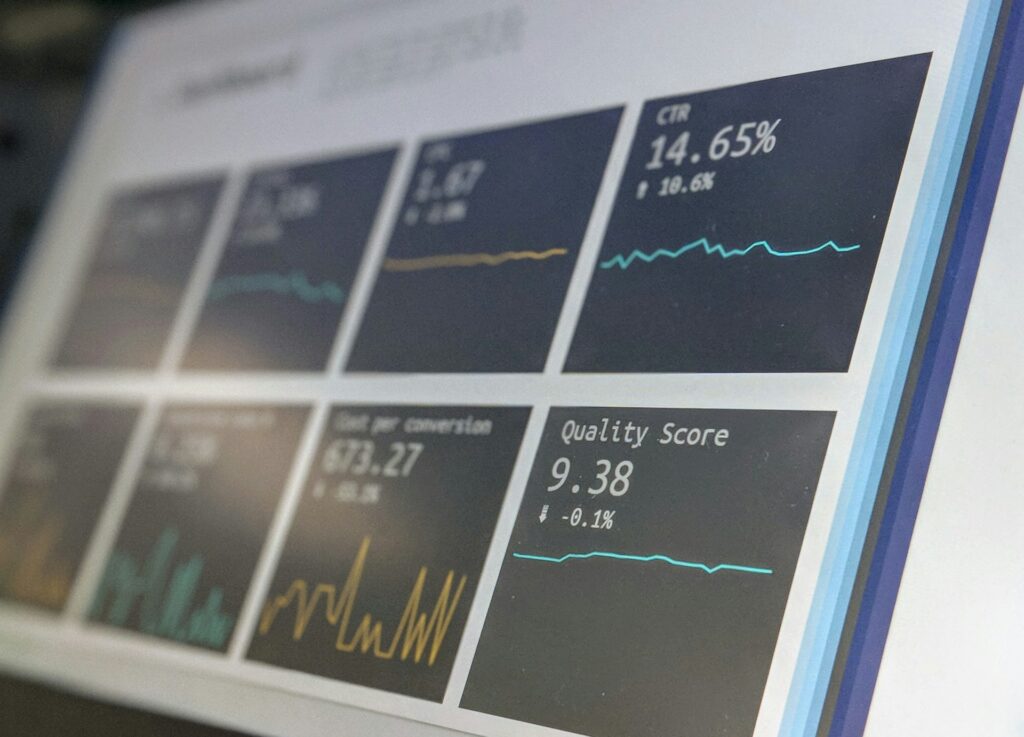AI is changing the game. Everywhere you look, people talk about how it’s going to shake things up, and yeah, there’s some fear in that. But here’s another way to see it: could an AI be your ultimate business partner?
Picture this: starting a company with no team, running it on almost no money, and still making it grow. That’s not some wild dream anymore. AI actually makes it doable.
This guide isn’t about long lists of random tools. It’s about real steps you can take to build a one-person AI-powered business that works. You’ve got ideas, and AI can help you turn them into something real.
So grab your coffee, and let’s figure out how to build a one-person AI business that can actually thrive.
Contents
- 1 1. Ideas & Context: Give Your AI Everything
- 2 2. Strategy & Decision-Making: Your Pocket Consultant
- 3 3. Content & Go-to-Market: Efficient Marketing Power
- 4 4. Product/Service: AI-Powered Rapid Prototyping
- 5 5. Automation: Build a Process-Driven Business with AI
- 6 6. Creative Support & Empowerment: Your AI Partner
- 7 7. Analytics & Insights: Gain Your “Night Vision”
- 8 8. Mentoring & Support: Your Infinitely Patient Sidekick
- 9 9. Innovation: Cultivate an Exponential Mindset
- 10 10. Optimal Organization & Productivity: Scale Without Bloat
- 11 You Are the Pilot
1. Ideas & Context: Give Your AI Everything

Every good business starts with an idea. But AI can’t read your mind. It needs context. That’s the part most people skip. They give it one vague line and expect magic. If you want real results, you’ve got to feed it everything.
Think of AI like a new team member. You wouldn’t just say “figure it out” and walk away, right? You’d tell them who you are, what you’re good at, what you care about, and what resources you actually have.
The same goes for AI. Tell it your background, your skills, your interests, your goals, even your weaknesses. The more you share, the smarter its help gets.
Once you’ve given it the full picture, start brainstorming. Ask it things like, “Based on my profile, what business ideas fit me best?” Then dig deeper:
- Who’s already doing something like this?
- What’s the first thing I should do to get started?
- What risks should I watch out for?
Use ChatGPT, Gemini, Claude—whatever tool you prefer. Let them act as your quiet research department, working in the background while you think big.
And about privacy, yeah sure it’s smart to be cautious. But don’t let fear stop you. These models use your input to generate ideas for you, not to publish them anywhere.
Be thoughtful, but also open. If you treat AI like your endlessly patient business partner, it’ll surprise you with how much it can do.
Also Read: 10 Genius Wealth-Building Methods to Multiply Your Money (Build Wealth Faster Than 99% of People)
2. Strategy & Decision-Making: Your Pocket Consultant

Now that you’ve got some ideas, it’s time to turn them into a plan. This is where AI really shines. Think of it as having a smart consultant in your pocket, one who never sleeps and charges you nothing.
If you’ve got a few ideas floating around, let AI help you sort through them. Ask questions like:
- “Which of these ideas fits my skills best?”
- “Which one would cost the least to start?”
- “Which one has the least competition right now?”
It’s easy to freeze when you’re trying to make decisions. There’s always uncertainty, always another “what if.” AI helps cut through that noise. It can weigh the pros and cons, spot patterns you might miss, and show you the most realistic next step.
You can even bring your ideas to life by testing them with virtual customers. Ask the AI to play different roles: “How would Busy Mom Sarah react to this coffee brand?” or “What would Tech Bro Tom think of this app?” It’s like running a mini focus group without leaving your desk.
And if you ever feel stuck, just ask straight up: “Given what you know about me, what’s the easiest path forward?” Because the AI already understands your goals and situation, its advice is tailored to you.
That’s how you turn AI from a tool into a real decision-making partner.
3. Content & Go-to-Market: Efficient Marketing Power

You must get your idea out into the world. And part of building a one-person AI business is finding customers who care. That’s where smart marketing comes in, and AI can handle a big part of it for you.
Forget needing a big budget or a full team. AI can help you with almost every piece of content you’ll ever need:
- Brand names and catchy taglines
- Brochures and pitch decks
- Social media posts and ad copy
- Website text and blog articles
Start by giving the AI your business idea and strategy. Then ask it real, actionable questions like:
- “How do I get my first customer?”
- “Write a simple go-to-market plan for this product.”
- “Create three social posts for [your audience].”
It’s that simple. Let the AI handle the creative grunt work while you focus on connecting with people and making decisions.
Here’s a solid tip: stick with one main AI tool for your business. When you keep everything in one place, the AI builds context. It learns your voice, your goals, and your style. Over time, it becomes your brand’s memory, not just a tool you dip into.
And don’t forget visuals. Today’s AI tools can generate logos, product shots, and even video ads from text prompts. You don’t need to be a designer to bring your ideas to life. The better your prompt, the more original your result will be.
With the right approach, you can build a full marketing engine powered by AI, and you’ll be the one driving it.
Also See: 10 ChatGPT Passive Income Ideas You Can Start Today
4. Product/Service: AI-Powered Rapid Prototyping

So, what are you actually selling? That’s the next big question, and AI can help you figure it out faster than ever.
You might start with one idea, but AI can pressure-test it against customer personas or market data to see what really sticks. That’s how you find product–market fit without wasting months guessing.
This is where AI completely changes the game for prototyping.
If you’re creating a physical product, you can go from idea to prototype in days, not months. Sketch something rough, feed it into an AI image generator, and watch it turn into a clean 2D concept.
Want to go further? Some tools can make 3D models or CAD files from that same prompt. You can even 3D print a sample to test with real people. Launching a t-shirt or sneaker brand? Make one version first and see if people bite with pre-orders before you invest more.
If you’re working on knowledge products, like courses, ebooks, or templates, AI can help there, too. It can create multiple versions of a course outline, refine lesson titles, or test different ebook angles to see what clicks with your audience. You can get real feedback before building the full product.
Keep asking AI the same key question: “Is there a real market need for this?” Then listen closely to the answers. Let the data and insights guide your next move. The beauty of AI is that it helps you pivot fast, refine quickly, and stay aligned with what people actually want.
That’s how you turn raw ideas into real products, without needing a big team or a huge budget.
5. Automation: Build a Process-Driven Business with AI

This is the part where AI really earns its keep: automation. If you want to run a one-person business that actually scales, you need systems that work even when you’re not around.
Start by listing out your regular tasks. What do you do every day or every week? Which ones are repetitive, high volume, or just plain boring but still necessary? Those are perfect targets for automation.
There’s a simple way to figure out what to automate first. Think in terms of three things:
- Variability: Does the task change much each time? If not, great! AI can handle it.
- Velocity: Does it involve lots of data or frequent activity? That’s another yes for AI.
- Value: Is it mission-critical or low-stakes? Start with the lower-value stuff to play it safe.
If a task is low variability, high velocity, and low-to-mid value, that’s your automation sweet spot.
Next, document your workflows. Literally write down each step. Once you can see the process, you’ll start spotting where AI can plug in. Most modern tools, like email platforms, CRMs, and accounting apps, already include built-in AI features. Use those first before getting fancy.
Then, once you’re ready to level up, look at automation platforms like Zapier or Make. They let you connect apps and AI together so things just happen on their own. For example:
“When I get an email with ‘Invoice’ in the subject, extract the amount and due date, save it to my spreadsheet, and draft a reply.”
That kind of setup might sound small, but when you multiply it across your entire workflow, it saves hours every week.
Start by automating the routine stuff. The goal is to free up your time for strategy, creativity, and growth; the work only you can do. With the right automations in place, your business keeps running smoothly while you take a break.
6. Creative Support & Empowerment: Your AI Partner

Running a business by yourself can feel like a grind. Some days, it’s exciting. Other days, it’s just you, your thoughts, and a long list of things you don’t feel ready for.
AI helps you keep things moving. You can use it to test product ideas, tweak your marketing, or analyze customer feedback. It shortens the trial-and-error cycle so you can learn and improve faster.
If you’re not a great writer, let AI draft your emails or polish your copy. Not comfortable with data? Have it clean up your spreadsheet and explain what the numbers mean. Wherever you’ve got a skill gap, AI fills it.
Beyond that, AI gives you confidence. It helps you sound more professional, stay organized, and tackle new challenges without second-guessing yourself.
It’s the kind of support that makes solo entrepreneurship feel less lonely and more possible. You don’t need a big team or perfect skills to create something meaningful. You just need curiosity, persistence, and a willingness to learn how to use these tools well.
7. Analytics & Insights: Gain Your “Night Vision”

Data alone doesn’t help much. It’s just numbers until you know what they mean. Think of AI like giving yourself night vision for your business. Suddenly, you can see patterns and opportunities that were hiding in plain sight.
Start by feeding your AI real data from your business:
- Your website analytics
- Sales reports
- Customer feedback
- Social media engagement
Then, start asking smart questions. Try things like:
- “Where are visitors dropping off on my website?”
- “Which customers spend the most?”
- “What trends show up in my negative reviews?”
Don’t stop at the obvious stuff. Ask open-ended questions too, like:
“Based on everything you see, what’s something I might be missing?”
AI can surface connections you wouldn’t think to look for. Maybe it finds that customers who buy one product on a Tuesday are three times more likely to grab another one by the end of the week. Insights like that used to be locked behind expensive analytics teams. Now, they’re right at your fingertips.
With AI helping you read between the lines, you’re actively predicting what’s next. That kind of visibility can take a one-person business a very long way!
8. Mentoring & Support: Your Infinitely Patient Sidekick

Running a business on your own can get lonely. There’s no one to bounce ideas off, no mentor in the next office, and sometimes no one to tell you you’re doing okay.
As mentioned earlier, AI can step in, not just as a tool, but as a mentor, a sounding board, and your endlessly patient sidekick.
Since you’ve already given it context about who you are and what you’re building, it knows your goals, your fears, and your strengths. You can ask it anything, like:
- “I’m feeling overwhelmed. How should I prioritize my day?”
- “Can you review my pitch deck and see if it still matches my vision?”
- “How should I reply to this tricky client email?”
The best part? It never gets tired or judges you. It just helps you think clearly and make better decisions.
But don’t hand over your thinking entirely. Treat AI’s advice as data, not gospel. Use your own judgment. In fact, it’s smart to ask two different AIs the same question and compare their perspectives. That’s how you sharpen your instincts and stay in control.
Read: 6 Game-Changing ChatGPT Agents That 99% of People Don’t Know About
9. Innovation: Cultivate an Exponential Mindset

The world changes fast, and your business has to move with it. AI is perfect for keeping you on the cutting edge. Use it as your brainstorming partner for what comes next.
Ask questions like:
- “How can I improve my product based on recent feedback?”
- “What new markets could I expand into with my current skills?”
- “What trends might shake up my industry next year?”
AI helps you explore “what if” scenarios quickly, so you can think ahead instead of playing catch-up. Don’t just optimize what you’re doing today; when you can use AI to imagine what your business could look like tomorrow.
Maybe websites become less central. Maybe customers start interacting more with AI agents than with humans. Thinking exponentially helps you prepare for those shifts before they happen. That’s how small businesses stay big in spirit.
10. Optimal Organization & Productivity: Scale Without Bloat

So your business is working. Now what? Traditionally, you’d start hiring. But in an AI-driven business, the smarter move is to optimize. The goal is simple: grow your output without growing your payroll.
Start by fine-tuning the systems you already built. Look at your automated workflows. Where are the slow spots? Which steps could AI handle completely?
And don’t just automate single tasks; automate chains of them. Maybe AI can handle the first three steps of your sales process or the last few steps of fulfillment. Every layer you automate saves time and keeps you lean.
This is how you separate revenue growth from cost growth. Your income can rise while your expenses stay nearly flat. That gap is where profit and freedom live.
That’s the real promise of the one-person AI business: a setup that scales smoothly, runs efficiently, and gives you the space to focus on creating, not managing.
You Are the Pilot
At the end of the day, building a one-person AI business comes down to this: you’re the pilot.
AI is your co-pilot, your engine, your radar, but it doesn’t fly the plane. You do.
You bring the human insight, the taste, the intuition. AI brings the speed, the data, and the tireless support.
When you put the two together, you can do things that used to take teams of people and months of work.
But remember, it’s only a tool. A powerful, patient, and adaptable one, but still just a tool.
You’re the entrepreneur. You decide what matters. And when you learn to work with AI instead of being intimidated by it, you’ll realize you don’t need anyone’s permission to build something incredible.
The future doesn’t belong to big companies; it belongs to people who are bold enough to hire themselves.